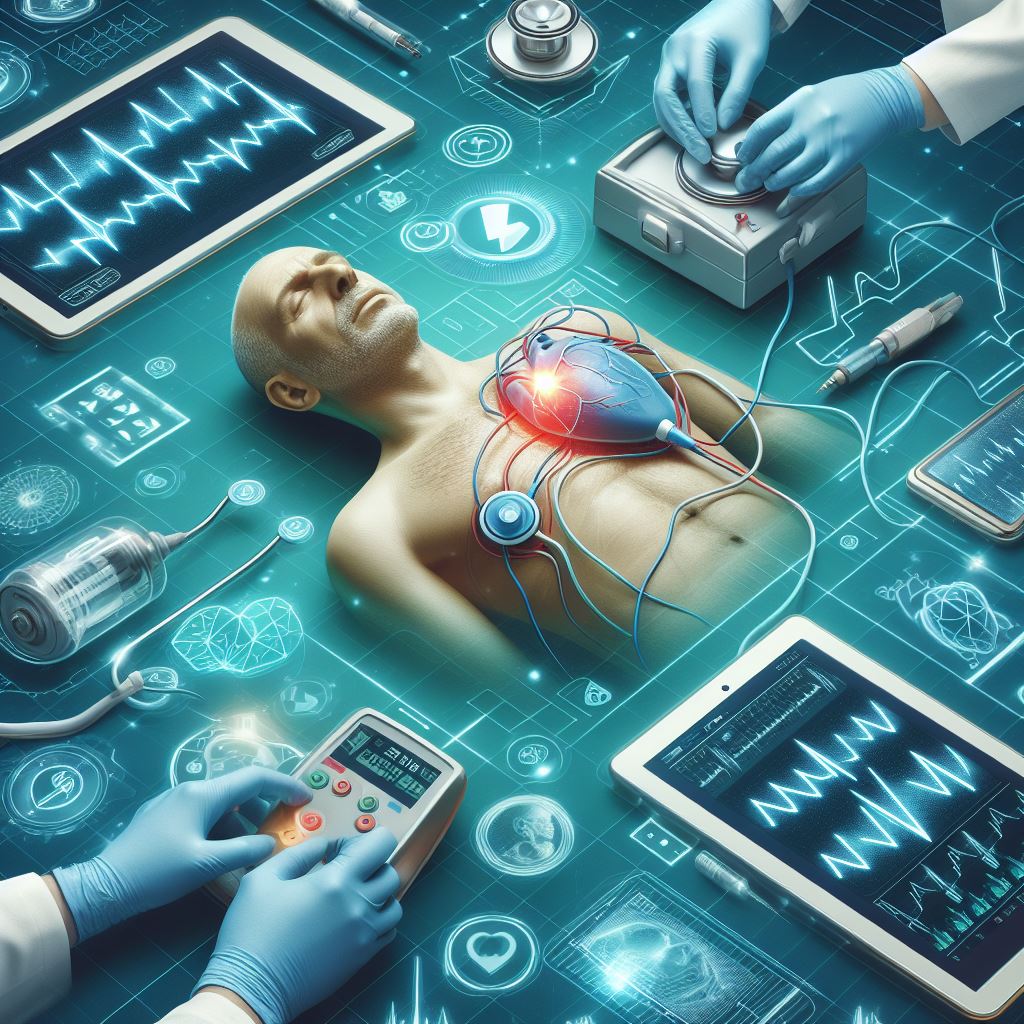A defibrillator is a vital medical device designed to deliver an electric shock to the heart. This shock aims to restore a normal heartbeat in cases of cardiac arrest or irregular heartbeat (arrhythmia). With various types of defibrillators available, it's essential to understand their functions and applications.
Types of Defibrillators
1. Automated External Defibrillator (AED)
An AED is a portable device designed for use by the general public. It automatically diagnoses life-threatening cardiac arrhythmias and delivers a shock to restore a normal heartbeat. AEDs are equipped with voice and visual prompts to guide users through the process, making them ideal for public places and emergency situations where immediate action is necessary.
2. Manual External Defibrillator (MED)
A MED requires a trained operator to diagnose and treat cardiac arrhythmias. These devices offer more control over the shock delivery and are typically used by healthcare professionals in hospitals and ambulances. The manual operation allows precise adjustments based on the patient's condition.
3. Implantable Cardioverter-Defibrillator (ICD)
An ICD is a small device implanted in the chest to monitor and correct abnormal heart rhythms. It continuously tracks the heart's activity and automatically delivers a shock if a dangerous arrhythmia is detected. ICDs are often used for patients at high risk of sudden cardiac arrest due to chronic heart conditions.
4. Wearable Cardioverter Defibrillator (WCD)
A WCD is a wearable device that provides continuous monitoring and automatic defibrillation if necessary. It is often used as a temporary solution for patients who are at risk of sudden cardiac arrest but are not yet candidates for an ICD. WCDs offer a non-invasive way to protect patients during their daily activities.
Conditions Treated with Defibrillators
Defibrillators are essential for treating several severe heart conditions, including:
- Ventricular Fibrillation (Vfib): A life-threatening condition where the heart's electrical activity becomes chaotic, causing the heart to quiver instead of pumping blood effectively.
- Ventricular Tachycardia (Vtach): A fast, abnormal heart rate originating from the heart's ventricles. Without treatment, it can lead to Vfib.
- Pulseless Ventricular Tachycardia (PVT): A type of Vtach where the heart beats rapidly without effectively pumping blood, leading to a lack of pulse.
- Cardiac Arrest: A sudden cessation of heart function, often caused by Vfib or Vtach, where defibrillation can be life-saving.
Common Locations for Defibrillators
Defibrillators are strategically placed in various locations to ensure they are accessible during cardiac emergencies:
- Hospitals: Equipped with both AEDs and MEDs to provide comprehensive cardiac care.
- Ambulances: Stocked with manual defibrillators to enable paramedics to deliver immediate treatment.
- Public Access Areas: Airports, shopping malls, and other crowded places often have AEDs available for emergencies.
- Sports Facilities: AEDs are commonly found in gyms, stadiums, and other sports venues to address sudden cardiac events among athletes and spectators.
- Schools: Ensuring the safety of students and staff, many educational institutions are equipped with AEDs.
- Offices: Companies install AEDs to safeguard employees' health in the workplace.
- Homes: Individuals with a history of cardiac issues might keep AEDs at home for immediate response to cardiac events.
Acting Quickly in Cardiac Emergencies
Defibrillators are only effective if used promptly. In cases of cardiac emergency, it's crucial to act quickly. Recognizing the signs of cardiac distress and knowing how to use a defibrillator can significantly increase the chances of survival.
---
Information gathered by Alnoor Gadiya, Tech IOSH, NEBOSH IGC.
